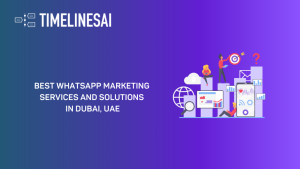When life gives you APIs, make CRM integration lemonade!
In today’s customer-focused business world, using advanced Customer Relationship Management (CRM) systems is vital for companies looking to improve their operations and boost how they interact with customers. One powerful way to get the most out of CRM systems is by connecting them to other apps using APIs (Application Programming Interfaces).
This smart move makes it easier for data to move between different platforms and opens up new opportunities to improve how businesses work. This guide will explain everything you need to know about integrating CRM systems, like Salesforce, with APIs to make your business more efficient and build stronger connections with customers.
Key Benefits of CRM API Integration
- Automation for time-saving: Integrating CRM systems with APIs helps automate repetitive tasks like entering data, guiding leads, and updating customer info. This saves time and reduces mistakes, letting sales teams focus on important stuff.
- Using customer data for better engagement: CRM API integration lets businesses use customer info from different sources to personalize interactions, tailor marketing, and make customers feel special. This helps build stronger connections and boosts engagement. Also check: How to Maximize Sales With LinkedIn and Pipedrive CRM Integration
- Giving sales teams useful data: By connecting CRM systems with APIs, sales teams get helpful info to make smart choices and improve results. They can see everything about a customer, spot sales opportunities, and adapt their strategies.
- Making workflows smoother: Often, businesses use lots of different systems that don’t talk to each other. CRM API integration fixes this by connecting everything, so data moves seamlessly between systems. This saves time and makes things run better.
- Expanding CRM capabilities: CRM platforms are powerful, but sometimes they need extra features. With CRM API integration, businesses can add on features from other apps, like smoother order processing or targeted marketing. This makes everyone’s experience better.
For those aiming to enhance customer service via WhatsApp, integrating a CRM system with a service like TimelinesAI can significantly streamline customer communication, allowing for more personalized and efficient interactions.
CRM API Integration Examples
Using CRM API integration has various uses within a company:
- Internal Use Cases:
- Routing Leads: This means sending leads gathered in the CRM system to the right salesperson.
- Creating Clients: Automatically making new clients in an ERP system. This helps ensure that leads get to the right salesperson quickly and that customer information moves smoothly into the ERP system.
- Customer-Facing Scenarios:
- Generating Support Tickets: When a customer reports an issue, the CRM system can create a support ticket and send it to the right department or agent to fix it.
- Adding Leads from Marketing Platforms: This means putting leads from marketing platforms straight into the CRM system. This way, no potential customers are missed, and marketing efforts can be tracked and analyzed effectively.
TimelinesAI complement these efforts by optimizing WhatsApp communication, whether it’s managing support tickets or engaging leads, ensuring your CRM integration translates into effective customer service.
Challenges of CRM API Integration
- Managing Engineering Resources: Integrating CRM systems with APIs needs engineering resources to build and maintain the integration. This might be hard for businesses with limited technical know-how or not enough engineering staff. Planning and assigning resources well is crucial for making sure the integration works well and stays that way.
TimelinesAI can alleviate some of these challenges by providing an easy-to-integrate platform for WhatsApp communication, reducing the burden on your engineering team.
- Scaling Integrations and Meeting Customer Expectations: As businesses grow, making CRM API integrations bigger to handle more customers and tasks can be tough. Customers now expect data to move seamlessly and update instantly. Businesses have to keep improving and adjusting their CRM API integrations to match what customers want and keep things running smoothly.
- Dealing with Data Silos and Keeping Data Organized: When different parts of a business or different apps store data separately, it creates data silos. This leads to messy, repeated data. Integrating CRM systems with APIs helps fix this by making sure all systems use the same data. But it needs careful planning to set rules and ways to handle data properly.
Understanding Data Integration and Customer Data Integration (CDI)
The Role of CRM Integration in Business Applications
CRM integration is like the glue that connects different apps and systems in a business. By using APIs, companies can sync data, automate tasks, and make workflows smooth across different parts of the company. This makes everything work better and helps teams collaborate and make smarter decisions based on data.
Differentiating CRM Integration from CDI
CRM integration focuses on linking CRM systems with other apps and systems. On the other hand, Customer Data Integration (CDI) is about bringing together customer data from many places. CDI includes merging data from CRM systems, marketing tools, online stores, and more. CRM API integration is a big part of CDI because it lets businesses access and use customer data from different sources in one place.
The Impact of Data Silos on Digital Transformation
Data silos are like barriers that slow down a company’s digital changes. When data is all over the place in different systems, it’s hard for companies to understand their customers well, make smart decisions, and give personalized experiences. CRM API integration helps by connecting different systems and letting data flow freely between them. This way, companies can bring all their customer data together, making digital changes smoother and helping the company grow.
Strategies for Successful CRM Integration
Involving the tech department in integration decisions
When we’re connecting our CRM (Customer Relationship Management) system with other tools, it’s important to get help from our tech team early on. They can make sure everything fits together smoothly, like checking if different systems work well together, can handle lots of data, and keep everything secure. Working together also helps everyone understand what we’re trying to achieve.
Deciding if we need custom integration
Sometimes, the regular ways of connecting our CRM with other tools might not be enough. That’s when we might need a custom solution made just for us. It can be great because it’s tailored to our needs, but it also costs more to build and maintain. We should think carefully if it’s really necessary for what we’re trying to do.
Choosing how data gets updated
When we’re connecting our CRM with other systems using APIs (ways for them to talk to each other), we have to decide how they’ll share information. One way is to have a two-way sync, where changes in one system automatically update the other. This is good for things like making sure all our customer info is up-to-date everywhere. Also, setting up notifications for when things change helps everyone stay in the loop and act quickly if needed.
Getting ready for integration
Before we start connecting everything, we need to make sure our data is in good shape. If it’s messy or has mistakes, it can cause problems later on. So, we should check it, clean up any old or wrong info, and make some rules about how we’ll manage it in the future. Also, we need to know what our APIs can and can’t do, so we don’t expect too much or get surprised later.
As you prepare your data and systems, integrating a tool such as TimelinesAI can be a strategic move to enhance your WhatsApp communication capabilities without adding complexity to your tech stack.
CRM API Implementation Best Practices
- Testing in a safe space: Try out CRM integration first in a test area before doing it for real. This helps catch any problems early without messing up the live system.
- Using IDs to match things up: Make sure every piece of data has a special ID so it can be matched correctly between systems. This stops things from getting mixed up or lost.
- Being flexible with field mapping: Decide how data moves between systems. Being flexible here helps make sure everything fits together nicely.
- Trying again if things don’t work: If something fails during integration, try again. This helps keep data safe and makes sure everything gets where it’s supposed to go.
- Keeping things going and listening to feedback: Once everything’s set up, make sure people actually use it. Listen to feedback and fix any problems that come up. Regularly checking how it’s doing helps make it work even better.
Types of APIs for CRM Integration
- System APIs: These help connect CRM systems with other backend systems like accounting or inventory management. They make it easy for different systems to share and update information, keeping everything running smoothly.
- Process APIs: These are all about automating complex tasks that involve many different systems. For CRM integration, they help with things like handling orders or managing customer leads, making everything happen faster and with less manual work.
- Experience APIs: These are like the face of the system, making sure customers have a great experience. They connect CRM systems with things like websites or mobile apps, making sure customers get the right info no matter how they interact with the business.
Selecting the Right CRM Platform for API Integration
- Introduction to CRM platforms: There are different CRM platforms like Salesforce, HubSpot, Microsoft Dynamics 365, and Zoho CRM. Each has its own features and can connect with other apps.
- Key features of CRM APIs: Each CRM platform offers different APIs (like Salesforce’s REST API or HubSpot’s API) for connecting with other tools. These APIs help businesses integrate their CRM with marketing, sales, and customer service tools.
- Considering platform specifics: When choosing a CRM platform, it’s important to look at things like community support and available tools for developers, like SDKs. Metrics like Github Stars can show how popular and supported the platform is.
When considering the right APIs for enhancing customer interaction through WhatsApp, TimelinesAI offers a seamless integration experience with your CRM platform, enriching customer engagement and support.
Conclusion
Integrating your CRM system with APIs is a big step forward in using digital tools and making your operations better. We’ve seen how it can help with lots of things, like automating tasks, making sure data is accurate, and giving customers a more personalized experience. Plus, it gives you useful insights from data to help you make smart decisions.
But to make it work well, you need to plan carefully, work together, and follow some important steps, like keeping data safe and testing everything thoroughly. By doing this, businesses can make the integration process smoother and see benefits like getting things done faster, building better relationships with customers, and growing even in a competitive digital world.
- What is WhatsApp Marketing and Is It Legal in India? [2024] - May 16, 2024
- Best WhatsApp Marketing Services and Solutions in Dubai, UAE - May 16, 2024
- How to Add WhatsApp Chat to Your Wix Site? - May 16, 2024



